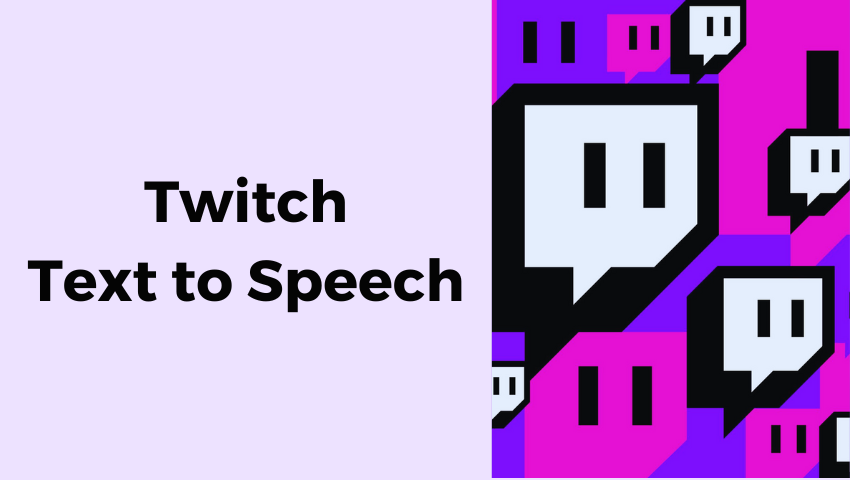In your guide about elevating Twitch streams with Text to Speech (TTS), you’ve highlighted the role of TTS in enhancing viewer interaction and accessibility. The program you’ve been focusing on, Wavel AI, is mentioned as a leading solution due to its natural-sounding voices and multilingual capabilities. However, it seems like you’re looking for alternatives to Wavel AI for further enhancement or different options.
Here are a few additional TTS programs you might consider integrating with Twitch to provide a more diverse or possibly better-suited set of features for your streaming needs:
- Voicemod
- Features: Offers voice changing and TTS capabilities. It’s popular among streamers for its variety of voices and sound effects.
- Platform Compatibility: Available on Windows.
- User Experience: Known for its ease of integration with streaming platforms like Twitch.
- IBM Watson Text to Speech
- Features: Provides highly natural and customizable AI voices. It supports multiple languages and offers extensive control over voice modulation.
- Platform Compatibility: Works on various platforms through API integration.
- User Experience: Geared more towards developers but offers robust support and extensive documentation.
- Google Cloud Text-to-Speech
- Features: Leverages Google’s AI to offer a wide range of voices and languages. It includes features such as WaveNet-generated voices that are highly realistic.
- Platform Compatibility: Accessible via API for integration into various platforms.
- User Experience: Requires some technical setup but provides high-quality voice output.
- Amazon Polly
- Features: Part of the AWS suite, it offers lifelike speech capabilities and supports SSML (Speech Synthesis Markup Language) for enhanced voice control.
- Platform Compatibility: Integrated through AWS, making it suitable for users already within the Amazon ecosystem.
- User Experience: Offers detailed control over speech settings and a broad set of tools for developers.
AI Voice with Twitch
AI voices have revolutionized the Twitch experience by providing an array of possibilities to engage viewers. With the support of APIs and extensions like Speechchat, Streamelements, and Twitch channel point rewards, streamers can now incorporate AI voices seamlessly into their broadcasts. These voices come in different languages and accents, allowing for a personalized and inclusive interaction with the audience. Mac users can also benefit from AI voice integration, making it accessible across various platforms. Whether you’re a streamer, content creator, or tv channel maker By following a step-by-step guide, Twitch streamers can harness AI voices to enhance their content, making it more engaging and entertaining for subs while minimizing trolling incidents, ultimately creating a vibrant and interactive Twitch.tv channel. Additionally, growing your Twitch audience is just as important as enhancing engagement with TTS. Many streamers work on increasing their Twitch followers to boost visibility and interaction on their channels.
Why Wavel AI Is the Best TTS Program for Twitch
While there are several TTS programs available, Wavel AI stands out as the best choice for enhancing your Twitch channel with TTS. Here’s why:
1. Natural-Sounding Voices
Wavel AI offers high-quality, natural-sounding voices that create an immersive and enjoyable experience for your viewers. The voices are available in different languages, making it accessible to a global audience.
2. Versatility
Wavel AI is not limited to Twitch; it’s compatible with various platforms, including macOS and Windows. This versatility allows you to use Wavel AI across multiple streaming environments.
3. Multi-Platform Support
Wavel AI is available on multiple platforms, including iOS and Android, ensuring that you can interact with your audience no matter where you are.
4. Multilingual Support
For streamers with international viewership, Wavel AI supports multiple languages, making it a versatile tool for engaging with viewers from different parts of the world.
5. User-Friendly Interface
Wavel AI offers an intuitive and user-friendly interface, making it accessible to beginners and experienced streamers alike.
6. Profanity Filter
Wavel AI includes a profanity filter to prevent inappropriate messages from being read aloud on your stream, ensuring a safe and friendly environment for your audience.
7. Content Moderation
Wavel AI allows you to moderate and filter content to maintain a positive chat experience.
8. Tutorials and Support
Wavel AI provides comprehensive tutorials and support to help streamers make the most of its features.
Twitch TTS Best Practices
Here are some best practices for using Twitch TTS effectively:
- Moderate Messages: Implement a moderation system to filter out inappropriate or spammy messages.
- Engage with Viewers: Interact with viewers who use TTS messages, acknowledge their presence, and respond to their questions or comments.
- Set Boundaries: Establish clear guidelines for TTS usage and let your audience know what is acceptable.
- Encourage Participation: Encourage viewers to use TTS to ask questions, share thoughts, or participate in games.
- Maintain Balance: While TTS can enhance engagement, be mindful of the balance between TTS messages and other aspects of your stream, such as gameplay or commentary.
Frequently Asked Questions
- What is Twitch Text-to-Speech (TTS)?
- Twitch Text-to-Speech (TTS) is a feature that converts text messages from viewers into speech, allowing them to be read aloud during live streams.
- How do I enable Twitch TTS on my channel?
- To enable TTS on your Twitch channel, you can use third-party TTS programs like Speechify or Wavel, or integrate TTS functionality through Twitch chatbots or extensions.
- Can viewers control TTS on my Twitch channel?
- Yes, viewers can trigger TTS messages by typing specific commands or donating bits or money, depending on how you’ve set up TTS on your channel.
- Is there a profanity filter for Twitch TTS?
- Many TTS programs, including Speechify and Wavel, offer profanity filters to screen out inappropriate language from being read aloud on your stream.
- Are there any best practices for using Twitch TTS effectively?
- Yes, best practices for Twitch TTS include moderating messages, engaging with viewers who use TTS, setting clear boundaries, encouraging participation, and maintaining balance with other stream content.







